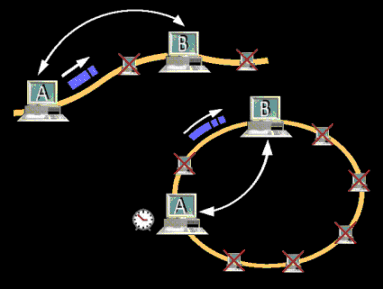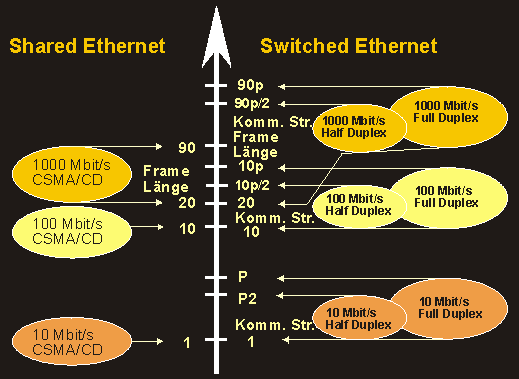shared bandwidth
In LANs with deterministic( token passing) and non-deterministic( Ethernet) access methods, the total available transmission bandwidth is divided among the individual active stations. This bandwidth sharing is called shared bandwidth. In addition, inefficient access methods such as CSMA/ CD mean that another part of the bandwidth cannot be used for user data transmission.
Token passing also divides the available bandwidth in an inflexible manner. Each station is sequentially allocated a relatively large transmission bandwidth. In the case of FDDI, 4 ms is available as token holding time, which is sufficient for the transmission of 10 to 15 FDDI packets.
Even with centralized transmitter rights management, as used with 100Base VG, bandwidth is shared among stations.
This transmission limitation is eliminated by dedicated bandwidth allocation, as is the case with ATM. This method provides a network-technological optimization of bandwidth requirements. The approach takes into account the applications of LAN segments and network stations. The respective station independently negotiates its bandwidth requirements with the centrally controlled sender rights management. This prevents certain stations from being allocated a fixed bandwidth range even though it is not used at all over longer periods of time. The main problem in implementing systems with dedicated bandwidths is the enormously high processing speed realized by corresponding switching systems.
##BO2G10


